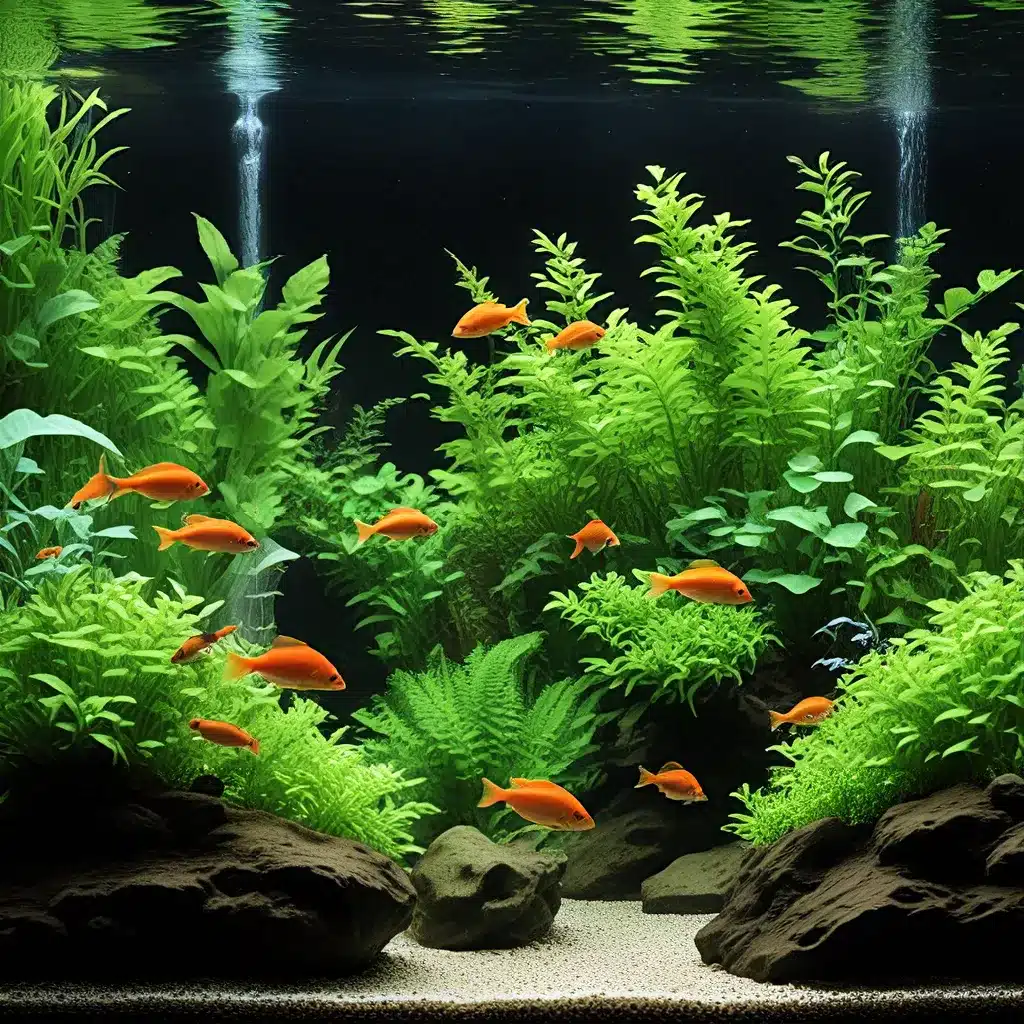
Understanding the Importance of Aquarium Water Changes
Maintaining optimal water quality is crucial for the long-term health and well-being of your aquarium inhabitants, whether you’re keeping tropical fish, captivating shrimp, or vibrant aquatic plants. Aquarium care involves a delicate balance of various factors, and regular water changes are a fundamental component of this process.
Neglecting proper water changes can lead to a gradual buildup of harmful substances, such as ammonia, nitrites, and nitrates, which can be detrimental to the aquarium ecosystem. These toxic compounds can stress your fish, inhibit plant growth, and create an imbalance that ultimately compromises the overall health and aesthetics of your aquarium.
The Science Behind Aquarium Water Changes
To understand the importance of water changes, it’s essential to delve into the science behind aquarium water quality management. As fish, plants, and other aquatic organisms metabolize food and excrete waste, they release these potentially harmful substances into the water. Over time, these compounds accumulate, and without proper intervention, they can reach dangerous levels.
Ammonia, for instance, is a byproduct of fish waste and decaying organic matter. High levels of ammonia can be toxic to fish, causing respiratory distress, skin irritation, and even death. Nitrites, another compound produced by the nitrogen cycle, can also be lethal to aquarium inhabitants.
Nitrates, on the other hand, are the end product of the nitrification process and are less immediately toxic than ammonia or nitrites. However, sustained high levels of nitrates can lead to algae blooms, impair plant growth, and create an imbalance in the aquarium ecosystem.
By performing regular water changes, you can effectively dilute and remove these harmful substances, maintaining a healthy and vibrant aquarium environment.
The Art of Aquarium Water Changes
Mastering the art of aquarium water changes involves a systematic approach that considers various factors, such as the size of your aquarium, the type and number of inhabitants, and the efficiency of your filtration system. The process may seem straightforward, but it requires careful attention to detail to ensure the well-being of your aquatic life.
Preparing for a Water Change
Before beginning the water change process, it’s essential to gather the necessary supplies. This includes clean buckets or containers designated for aquarium use, a gravel vacuum or siphon, a water conditioner or dechlorinator, an algae scraper or sponge, and towels or absorbent cloths.
Matching Water Parameters
When replacing the water in your aquarium, it’s crucial to ensure that the new water matches the existing water parameters as closely as possible. This includes temperature, pH, and any other specific water chemistry requirements your aquarium inhabitants may have. Carefully pouring the prepared replacement water into the aquarium and adding the appropriate amount of water conditioner can help create a smooth and gradual transition, minimizing stress on the aquarium inhabitants.
Determining the Frequency and Volume of Water Changes
The frequency and volume of water changes depend on various factors, including the size of your aquarium, the stocking density, the efficiency of your filtration system, and the overall nutrient levels and water parameters. As a general rule of thumb, a weekly water change of 25-50% is recommended for most freshwater aquariums. However, this may need to be adjusted based on the specific needs of your aquarium.
Monitoring and Maintaining Water Quality
After completing a water change, it’s essential to monitor the aquarium closely for any signs of stress or distress among the inhabitants. Observe the fish, shrimp, or other aquatic life for any unusual behavior, such as erratic swimming, loss of appetite, or visible signs of illness. Additionally, test the water parameters regularly to ensure they remain within the optimal ranges for your aquarium’s inhabitants.
Incorporating Aquascaping Techniques to Enhance Water Quality
While water changes are a crucial aspect of maintaining optimal water quality, incorporating strategic aquascaping techniques can further enhance the health and aesthetics of your aquarium. Aquascaping, the art of designing and arranging aquatic plants, rocks, and other decorative elements, can play a significant role in maintaining a balanced ecosystem.
The Role of Aquatic Plants
Aquatic plants are not only visually appealing but also serve as natural biological filters, absorbing excess nutrients and helping to maintain stable water parameters. Carefully selecting and positioning your plants can create a thriving, low-maintenance aquarium environment.
Utilizing Effective Filtration Systems
Investing in a high-quality filtration system is another crucial aspect of maintaining optimal water quality. Mechanical, biological, and chemical filtration work together to remove waste, debris, and dissolved compounds, complementing the water change process and ensuring the long-term health of your aquarium.
Balancing Aquarium Inhabitants
Stocking your aquarium with a diverse and balanced community of fish, shrimp, and other aquatic life can also contribute to maintaining water quality. Different species have varying requirements and play unique roles in the ecosystem, promoting a natural balance and reducing the buildup of harmful substances.
Conclusion: Embracing the Art of Aquarium Water Management
Mastering the art of aquarium water changes is a fundamental aspect of successful aquarium keeping. By understanding the science behind water quality, developing a systematic approach to water changes, and incorporating aquascaping techniques, you can create a thriving, visually stunning aquarium that provides a captivating and rewarding hobby experience.
Remember, the key to maintaining optimal water quality in your aquarium lies in your dedication to regular maintenance, attention to detail, and a commitment to continuous learning. By embracing the art of aquarium water management, you’ll unlock the true potential of your aquatic haven and enjoy the endless rewards of a healthy, vibrant aquarium. Happy fish-keeping!

